Flower power
This week: Flower power; The world’s weather is inextricability linked; Cow vetch; More Wild flowers; Meanwhile…;
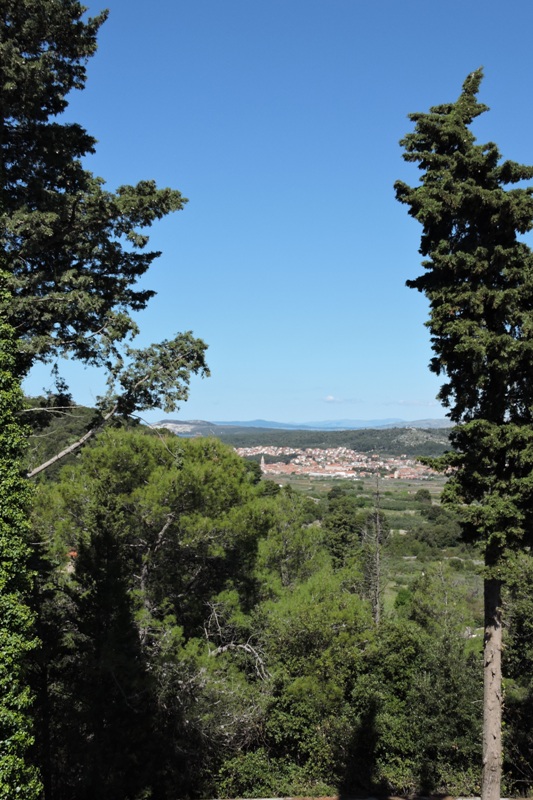
The Wild Boar are steadily getting closer to home.
Whether that is because their numbers are increasing here on the island or because they are hungry or both, I don’t know, but the evidence is all around.
Bearing in mind that the Maquis is literally on the other side of my orchard wall, it is probably not surprising to see the remains of their rooting. The Boar are Maquis dwellers.
We haven’t reached the stage that they have in Rome, whether they roam the streets and will steal shopping baskets from ladies, because they have learned that people = food.
Walking along the donkey track on Thursday, a whole section of wall has been attacked.

The boar are looking for grubs, larvae, arachnids, in fact anything that they fancy.
With their immensely strong snouts, powerful muscles together with a weight of 90 kilograms, they pack a significant punch.
I stopped and replaced the stones which had been spread across the path.
A bit further up the moss and lichens at the side of the path had been rooted up. They seem not to like bulbs though. I found a number of flowering bulbs that had been left on the surface and replaced them too.
Flower power
As I write the first draft of this week’s blog, on a wet and gloomy Friday afternoon, I have three damp felines with me.
No, they are now too big to all be on my knee at the same time, but they are all close enough to touch.
Picking up where I left off on a rainy Saturday morning, a different three managed to squeeze themselves onto my knee, but only after I had moved the keyboard out of the way.
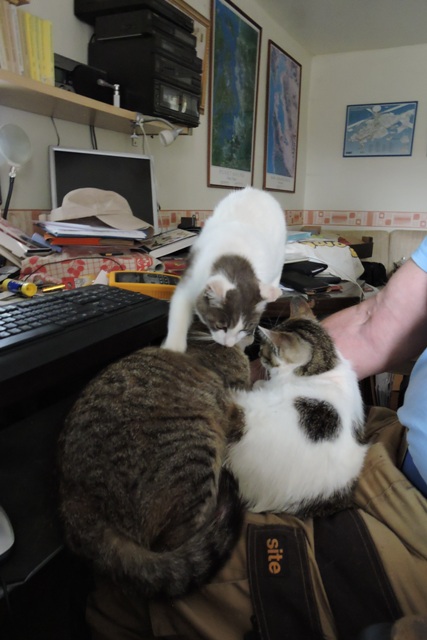
As I write, I’ve realised that this week’s blog is all about wild flowers.
With nice weather earlier in the week and even today in the rain, I have been out walking on the highways and by-ways around my home.

I realised that this week I have seen more wild flowers both in variety of species and actual numbers than I think I have ever seen before.
This is entirely subjective of course and completely dependant on the weather on the day. On a damp afternoon many flowers are tightly closed.
There are a number of local flowers which only open for a few hours, or for just a single day.
Then there are flowers that only open when the sun shines. But springtime in Dol is the time to see the breadth of variety of wild flowers.
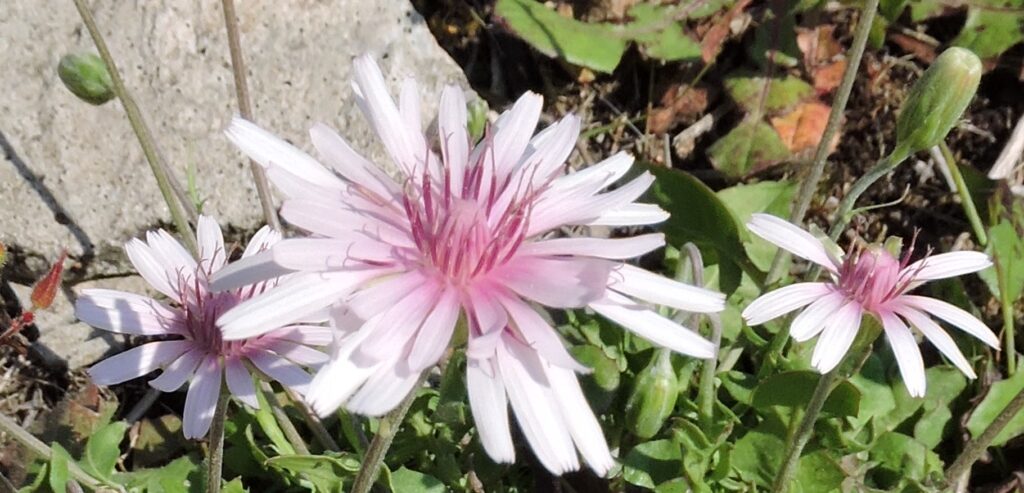
As soon as the heat of summer arrives, which may well be quite soon, there will still be flowers, and some grasses, but they are often just of a handful of deep rooted varieties.
The rest have set their seed and died. The annuals have completed their cycle and the perennials will appear again next year.
By autumn there will be more different wild flowers along the paths, but not the number or variety that I see in spring.
The world’s weather is inextricability linked
Have you heard about the scorching heat which is currently affecting the Indian sub-continent?

What about the Tornado in Spain on Tuesday and in France last week?
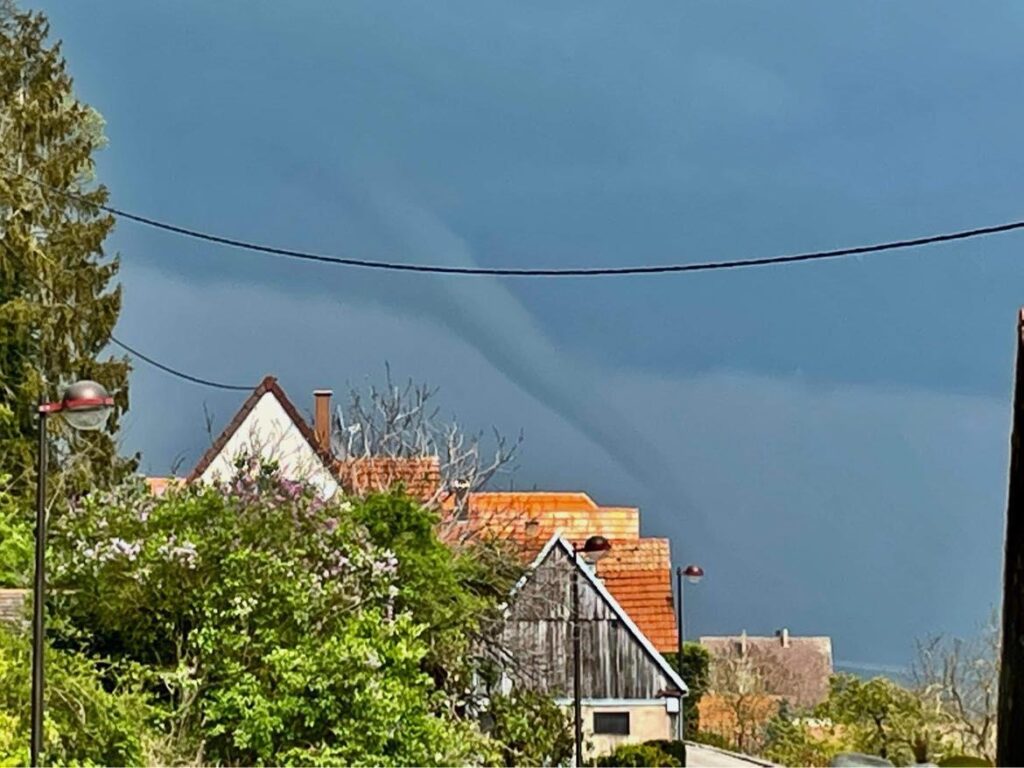
But did you know that the cause of the Indian heat is storms in the eastern Mediterranean?
OK that is a very simplistic, but none the less an accurate single sentence description of the cause of the ongoing heatwave.
So when NOAA (US National Oceanographic and Atmospheric Administration) this week announced that the La Niña Pacific cold phenonium is not collapsing as it normally does in spring, but is building again, this will affect the North Atlantic Oscillation.
At a macro scale does that matter to Europe and at a micro scale us here in Dol? The answer is an emphatic “Yes” to both questions.
The Pacific coast off Lima, Peru and the island of San Lorenze, is a mere 11,230 km due west of Dol and this is where an upwelling of cold sea water starts the ENSO known as La Niña, in Spanish “The girl child”.
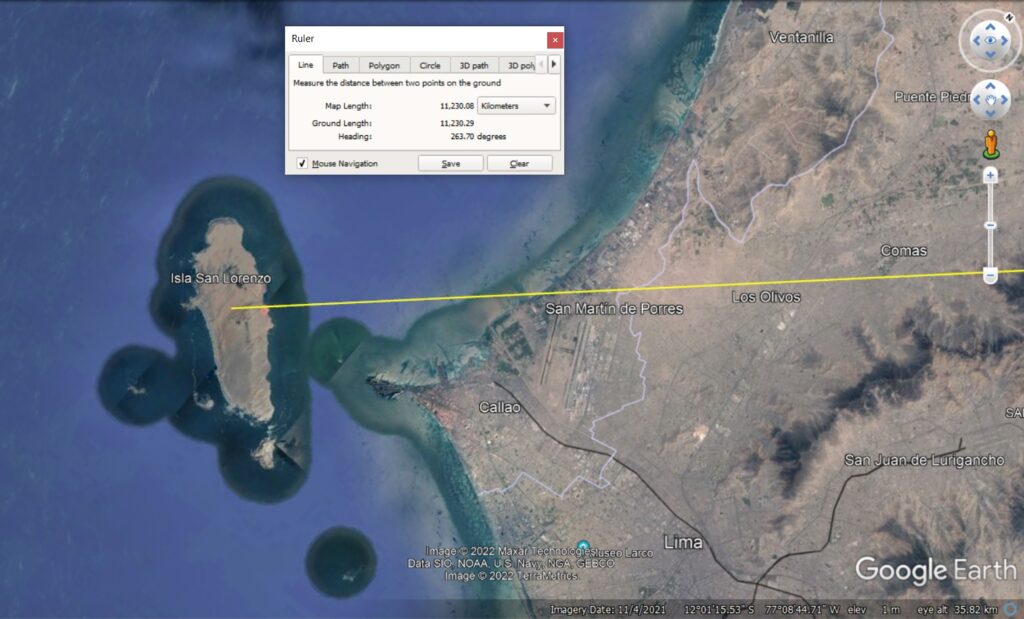
El Niño and La Niña are opposite conditions of the ENSO, one hot the other cold.

The Severe Weather Europe website explains it well and in more-or-less non technical language.
But for blog readers, the thumb nail version is that large oceans affect weather globally through things like the west to east flowing jet stream.
A cold Pacific Ocean (La Niña) increases the number and intensity of hurricanes which form in the mid Atlantic Ocean.
Equatorial and Mid-Atlantic storms eventually affect European weather patterns, and that means us.
A lot can change in a weather week, so looking forward three to six months is fraught with difficulties.
At the macro scale, the forecast is for summer high pressure over south western Europe and low pressure over north Eastern Europe, all caused by La Niña.
This means a hotter and drier than normal summer for us in the central Mediterranean. The bad news is that several long range predictions are suggesting the heat will be her before the end of May.
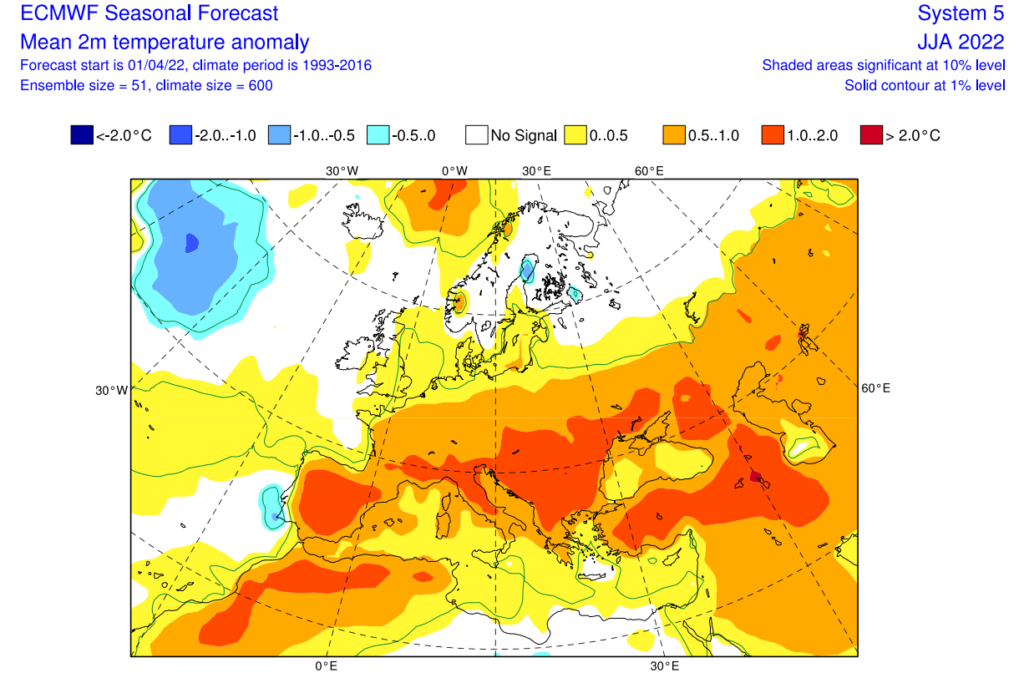
The devil is of course in the detail, and with marked contrasts between the north and the south sides of Otok Hvar, and even between the forested Thermal Belts of Dol, Vrbanj, Pitve and the coastal plain settlements of Stari Grad, Vrboska and Jelsa, where you actually are may not mirror the forecast.
But I am preparing for more than my usual regular summer irrigation being needed this year.
Cow vetch
Every time I go for a walk with the felines, I seem to come across something I’ve either not noticed before, or I that have seen but have not been able to identify.
Earlier this week, I had three of the felines all lined up by the gate, asking to go for a walk through the olives. It was warm and sunny and I don’t need much of an excuse to stop doing chores.
One of my neighbours had Bobbie, his Border Collie out. Bobbie is still a big puppy and is as daft as a brush and just wants to play, however the felines don’t understand that!
So we went a different and less used route.

As soon as I turned off the main path, I saw lots of vibrant purple flowers. They were climbing through shrubs, across walls, up old fencing and were in clumps by the side of the path.
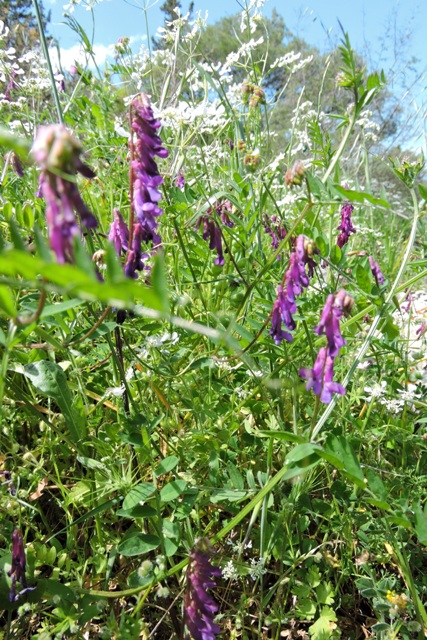
I could see straight away from the leaves and the climbing tendrils at the end of every shoot, that it was one of the Pea family.
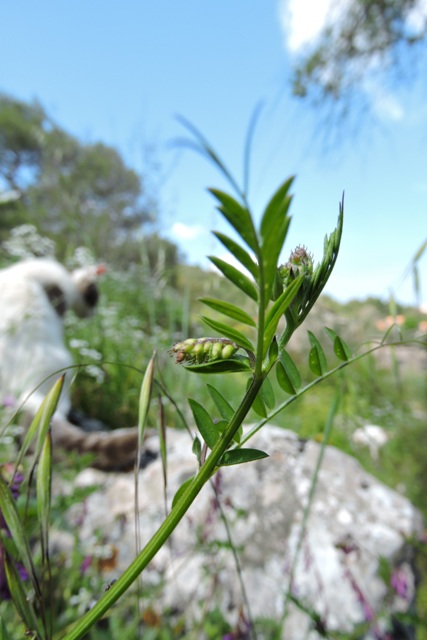
It’s not a wild Sweet Pea, but something similar.
Coming back home after taking some photographs, I was able to positively identify it as Cow vetch, Vicia cracca.
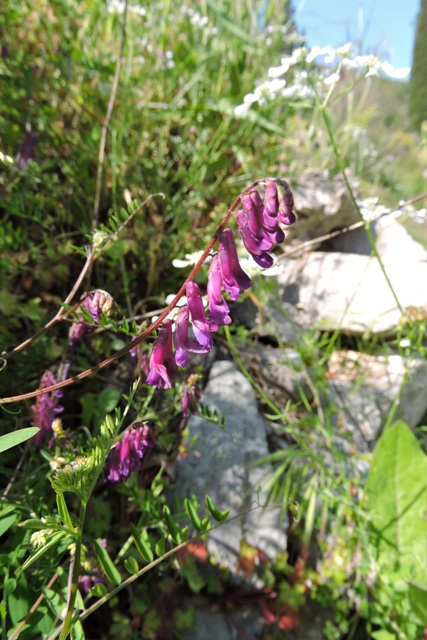
It is very similar to the Hairy Vetch, another Balkan native plant, but only when I examined the smooth stems was I able to identify it as V.cracca.
In researching the plant, what really interested me was its agricultural use.
Cow vetch is own as a cover crop and green manure. Because of it’s growth habit, it strangles and out performs smaller plants, forming a dense mat on the ground where there is nothing to climb.
Because it is a legume, fixing nitrogen in the soil and when cut it acts as a mulch, tomato plants can be grown with success where the vetch has over wintered.
I’m still searching for the illusive answer to my weed problem. I will be out later in the year, with a paper bag, collecting the ripe seed pods to try a bit more experimental horticulture for next spring.
More Wild flowers
There is a rich diversity of plant life here on the island.
Not perhaps on the scale of the wild flower meadows found in some place, for example the Aiguille Rouge range, near Chamonix.
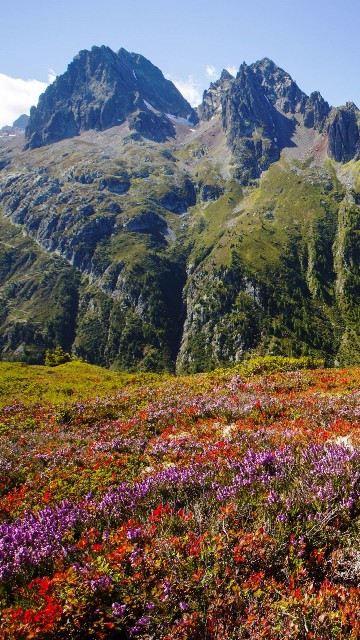
But then we do not have the rainfall or winter snows needed for these alpine meadows.
Everything is really a wild flower, from the humble dandelion to the majestic thistle. It’s just that some grow more rapidly, set and spread seed easily and annoy the heck out of plantsmen!
That is when they get called weeds. They are the right plant but in the wrong place.
Two weeks ago I mentioned a small blue flower that I have growing in the orchards which I hadn’t been able to identify.
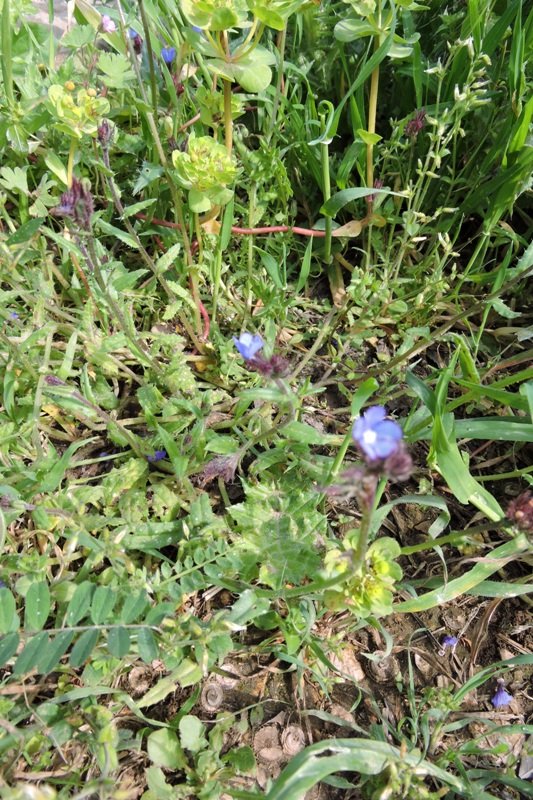
While I was looking up the vetches, I came across it in one of my books. They are Anchusa Avensis, Small Bugloss, a native medicinal herb.
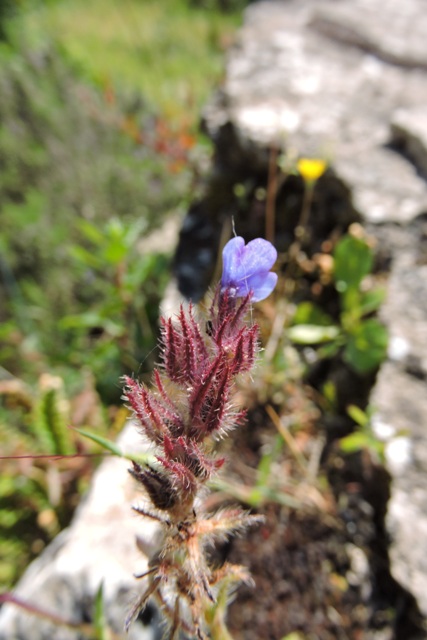
Several years ago I planted Lucerne between a row of fruit trees in the drupe orchard.
In the following years it has kept the weeds in check. However I think that last year when I ignored the orchards in favour of building work, an errant thistle spread its seed along the row. This is the result.
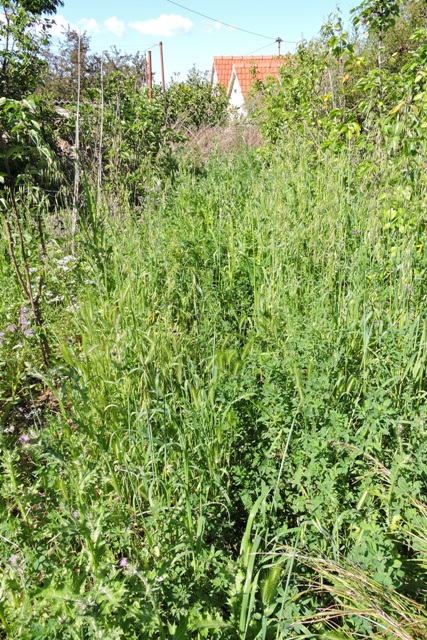
I have cut everything back this week, before the dozens of young thistles could self seed and spread even more.
Lucerne is a crop, which can be cut for animal fodder up to three times a year, so it will come back.
However I think I need to dig out the roots of the thistles and grass though, while I can see them.
Another local plant that has adapted to local conditions is the Pellitory of the wall, Parietaria judaica,

This spreads everywhere and is a perennial to boot. Its seeds are spread by wind and insects and it will grow into large shrubby mounds.
The plant overwinters and grows again, even larger, from the crown at soil or wall level.
I’ve found that once you remove the crown, then the roots will die. Its leaves and flowers are hairy with Velcro like hooks, so they attach to anything and everything too.
This is one plant I’ll only ever control, never eradicate.
Meanwhile…
I am carefully mapping where I see wild flowers, photographing them and then trying to identify the ones I do not recognise.
This has a striking scarlet flower but there is just one flower to each plant, and they only grow in one small patch.
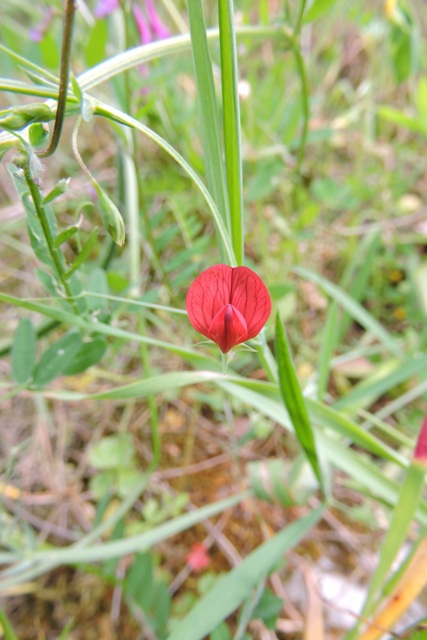
The photograph is in closeup. Had there been a lot of other plants or flowers close by, I may not have noticed it.
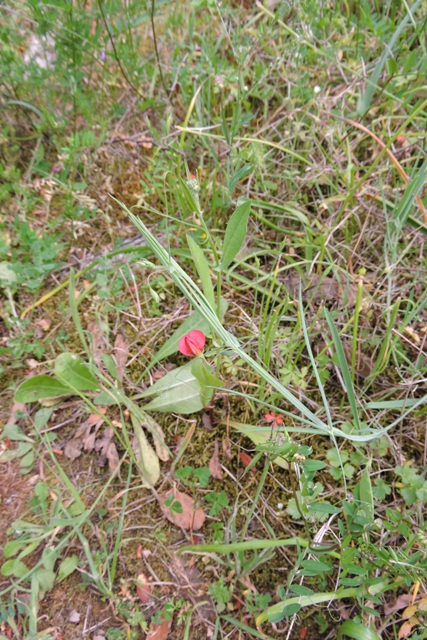
I usually take at least two photographs. One will be of the plant in its native habitat and another will be against a calibration scale.
When seen against a scale, you get the impression of how tiny the flower actually is. This helps in the identification, in this case Lathyrus cicera, the Red Vetchling.

Nearby, I also found some Yellow Vetchling, Lathyrus aphaca, in amongst the lichen.
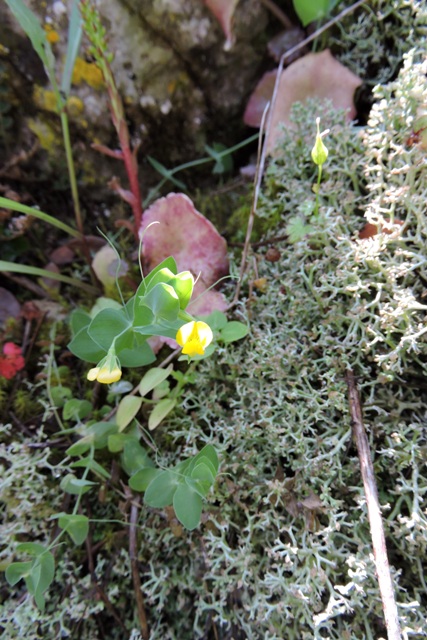
There are also the flowers and seed heads which I am still trying to identify. The smaller they are, the more difficult it seems.
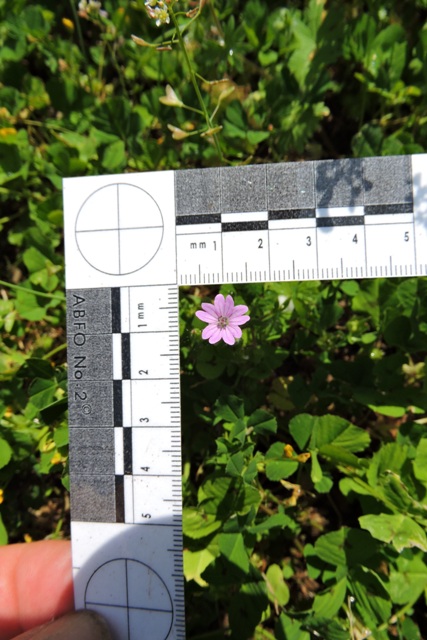
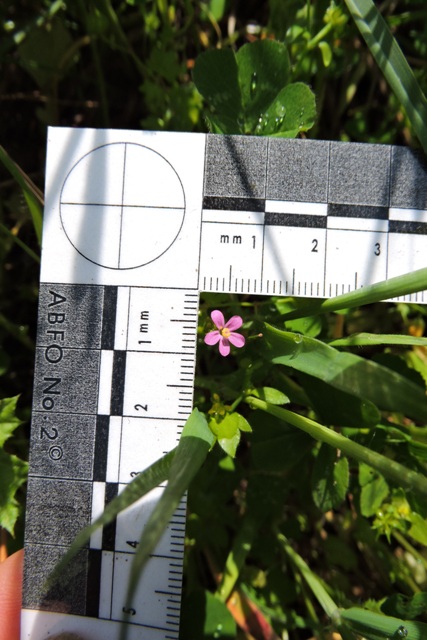
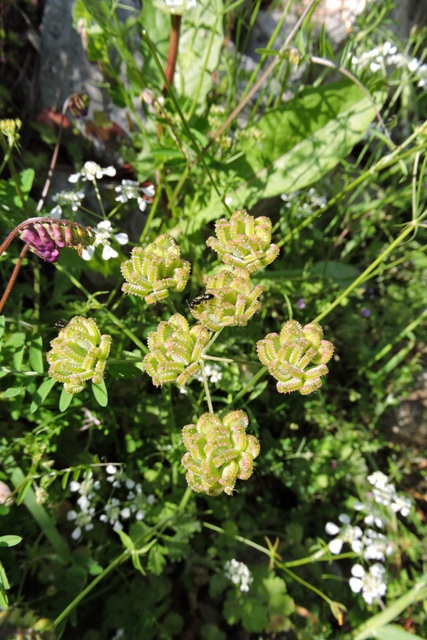
More common wild flowers are easy. Things like the White Dead Nettle, Lamium album.

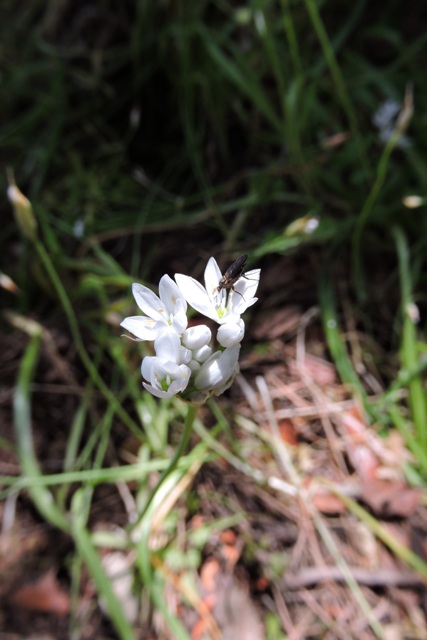
And of course there are the Prickly Pear Cactus. Although they can be found all around my home, they are alive rather than thriving.
I suspect this is because it is not quite hot enough, or dry enough for them to really grow into large cactus plants.

Meanhile, down in the olive groves, the grasses have taken over.
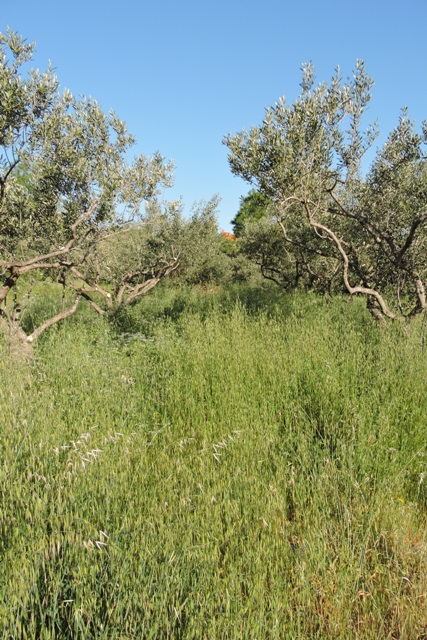
I took the photo at the start of the week when the felines decided that it was just too tall for a walk.
My neighbour has spent three full days with a petrol strimmer cutting everything back.
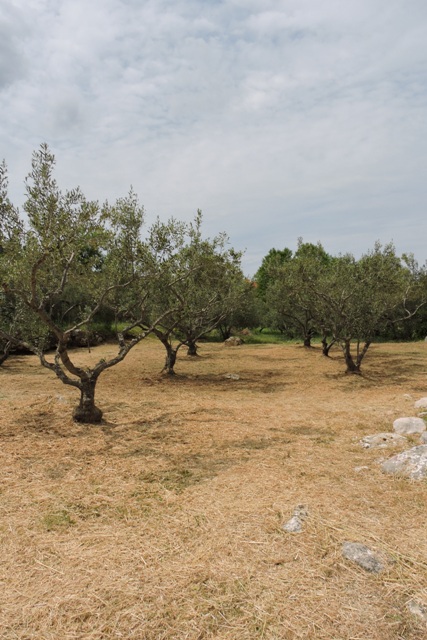
There has to be more efficient, environmentally friendly way of cutting the grass – in the olden days, it was called a scythe or some sheep and goats.
One man went to mow, went to mow a meadow….. NCG
2 Responses
Tony Griggs
Meanwhile here on the 40th parellel south of the equator on Flinders Island we have had a cold snap with snow in the higher regions and Linda reported winds around 100kph which is storm force. Another 9 knots and it would be hurricane force Norman! Linda said it’s the wildest weather ever experienced by her (I’m away working in Vic). Over 100mm rain. Winter has come early thanks to El Nina!
Marcy Fletchall
Love the Pink Hawks Beard and the vetches. All are very pretty. It’s warm but windy here and almost every day we are under fire and high wind warnings. Seems there is crazy weather everywhere. Thanks for the maps. Very interesting.